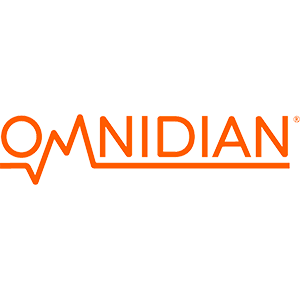
3 Key Solar Safety Hazards (& How to Mitigate Them)

VP, Commercial Operations
With $2 trillion invested in clean energy in 2024 alone, the performance, reliability, and safety of these assets is top of mind for stakeholders who have a vested interest in their success. As such, responsible solar safety is vital to protecting investment dollars, property, and – most importantly – lives.
While engineering standards continue to improve drastically year-over-year, any system producing energy has the potential risk of catastrophic impacts when key components fail. Fortunately, you can take proactive steps to prepare for solar site safety issues before they happen.
Check out these three solar power safety concerns and learn how you can address them in a preventive manner.
Top 3 Solar Safety Concerns
Based on the latest data from HelioVolta, 72% of commercial solar systems in the U.S. have major or critical safety problems. These solar power safety issues are the most common:
Workmanship Issues
More often than not, hazards around solar assets stem from workmanship issues. For example, mismatched solar connectors, which are installed on-site by workers, are responsible for 59% of safety concerns at U.S. commercial sites, while wire management mistakes contribute up to over 26% of site safety problems.
The quality of a solar installation is directly tied to the expertise of the personnel responsible for ensuring a safe and code-compliant installation. Properly trained and certified professionals hired to perform the QA/QC inspection can identify post-installation concerns, ultimately ensuring successful and safe operation.
QA/QC also plays an important role when a change of asset ownership occurs, such as when an EPC hands off the project to its long-term owner/operator. This inspection provides a punch list of items that need to be addressed before the project reaches final completion or undergoes an ownership change, ultimately helping to maintain high safety standards, better performance, and optimal ROI.

Connector with copper wire exposure that could lead to a thermal event.
Equipment Reliability
Not all equipment is made equally, which can have lasting effects on its safety and reliability. Additionally, as systems age and deteriorate, they naturally encounter more issues. For example, with over 350,000 asset years of data, our team at Omnidian has seen every level of production and degradation variance by OEM.
The high demand for new solar installations often results in equipment quality testing being rushed to meet faster production timelines. As a result, real-life environment testing frequently takes place on operational systems.
72% of U.S. commercial solar systems have major or critical safety problems.
As such, proper maintenance and adherence to OEM warranty requirements are essential for expanding the lifespan of the equipment and ensuring safe, optimal operation.
Safety Negligence
Finally, the solar industry isn’t immune to human error. A seemingly innocent oversight or decision can translate into solar safety issues. A failure to inspect the reliability of protective equipment, for example, can lead to electrical shocks.
This is why every individual working on a solar array must adhere to OSHA and industry safety requirements, coupled with thorough knowledge and experience in each components’ OEM installation and maintenance guidelines. Highly skilled technicians remain diligent in meeting or exceeding industry standards.

Module junction box failing and overheating, possibly leading to a thermal event.
Prevention of Solar Safety Concerns
As a solar asset owner, it’s crucial to have a vested interest in ensuring your investment is properly inspected and maintained regularly to prevent potential issues. These safety measures mitigate the risk of accidents, equipment failures, and other hazards, and ultimately contribute to the sustainability and trustworthiness of solar energy solutions.
While not all solar safety hazards can be completely avoided, there are steps you can take to mitigate their likelihood and ensure your assets perform safely in their environments:
-
Use vetted, quality equipment and technology
Invest in quality equipment known for longevity, reliability, and performance. Every component of your solar technology stack should be a highly-rated solution, approved and vetted by industry experts and professionals. Ideally, it should also be user-friendly and integrate seamlessly with other solutions. A verified tech stack working in harmony helps you more easily detect and prevent solar safety concerns as they arise.
-
Understand maintenance requirements
While it’s common for solar developers and owners to budget for capital expenses, not all properly forecast for operational expenses (OpEx). It’s essential to budget for both preventative and corrective maintenance to keep your assets performing optimally and thriving throughout their 20+ year lifespans.
-
Commission a 3rd party QA/QC site inspection
An independent inspection for quality assurance and quality control (QA/QC) helps build transparency and provide insight into the resiliency of your system. This step is vital for helping you address immediate concerns before they become a problem, and reduce the costs of expensive, after-the-incident corrective maintenance.
-
Take a preventive approach to maintenance
By investing in proactive measures to maintain your solar assets, you can catch many issues before they occur. A preventative approach ensures your solar installation remains safe, reliable, and efficient. To that end…

Hot fuse found in a main system during an Omnidian preventive maintenance inspection at a leading corporate retailer store.
Solar Safety: Our Take
Being proactive with the post-install experience is the foundation of our business.
We recognized early on that the reactive nature of asset management wouldn’t be sustainable in the long term. A proactive approach had to be prioritized if the industry was to encourage peak asset performance and achieve the anticipated return on investment (ROI).
As an asset owner, you can benefit from our approach in several ways:
With over 350,000 years of asset data, our team has seen every level of OEM quality variance.
-
Clear understanding of your asset
We can perform an initial QA/QC inspection to establish a baseline for future operations and maintenance, and address any initial concerns right from the start. Additionally, all assets must pass our vigorous Performance Verification Process (PVP), which ensures your system is producing as expected.
-
Experienced equipment management
With hundreds of years of collective industry knowledge and experience with a variety of equipment, we know what’s reliable (or not) and can provide feedback on any components that might cause potential issues, so you’re not caught off guard by equipment failures.
-
Maintenance reminders
We keep you informed about manufacturer-required maintenance, ensuring your systems are regularly inspected to prevent potential problems and warranty violations.
-
Comprehensive asset care
In the event of a solar safety concern, our team will identify the issue and leverage our nationwide network of field service providers to address and resolve it promptly.
-
Peace of mind
Our solar monitoring services provide consistent feedback on the performance of your assets, ensuring any anomalies are detected and resolved immediately, so you can have peace of mind.
Preventive maintenance can help you keep solar power safety concerns in check. While no one can predict when equipment may fail, and with new untested tech being deployed to the market daily, a proactive approach will mitigate more problems than it creates, saving potentially threatened lives and giving you back time, money, and peace of mind.
Alleviate your solar safety concerns by talking to one of our solar experts:








